WalkSafe
This research work has been published in the 15th International Conference on Information Systems for Crisis Response and Management (ISCRAM). You can read it at:
WalkSafe: College Campus Safety App
Key Design Highlights
Our app focused on providing users higher sense of security and convenience as compared to PSUAlert. The app is connected to pebble watch which helps notify user of the incident if he/she does not have phone on hand.
Ideate
The idea for the app was drawn from PSUAlert, a text/call/email time-based notification system for incidents reported on Penn State Campus. The following are PSUAlert features and the design problems that the app aimed to improve:
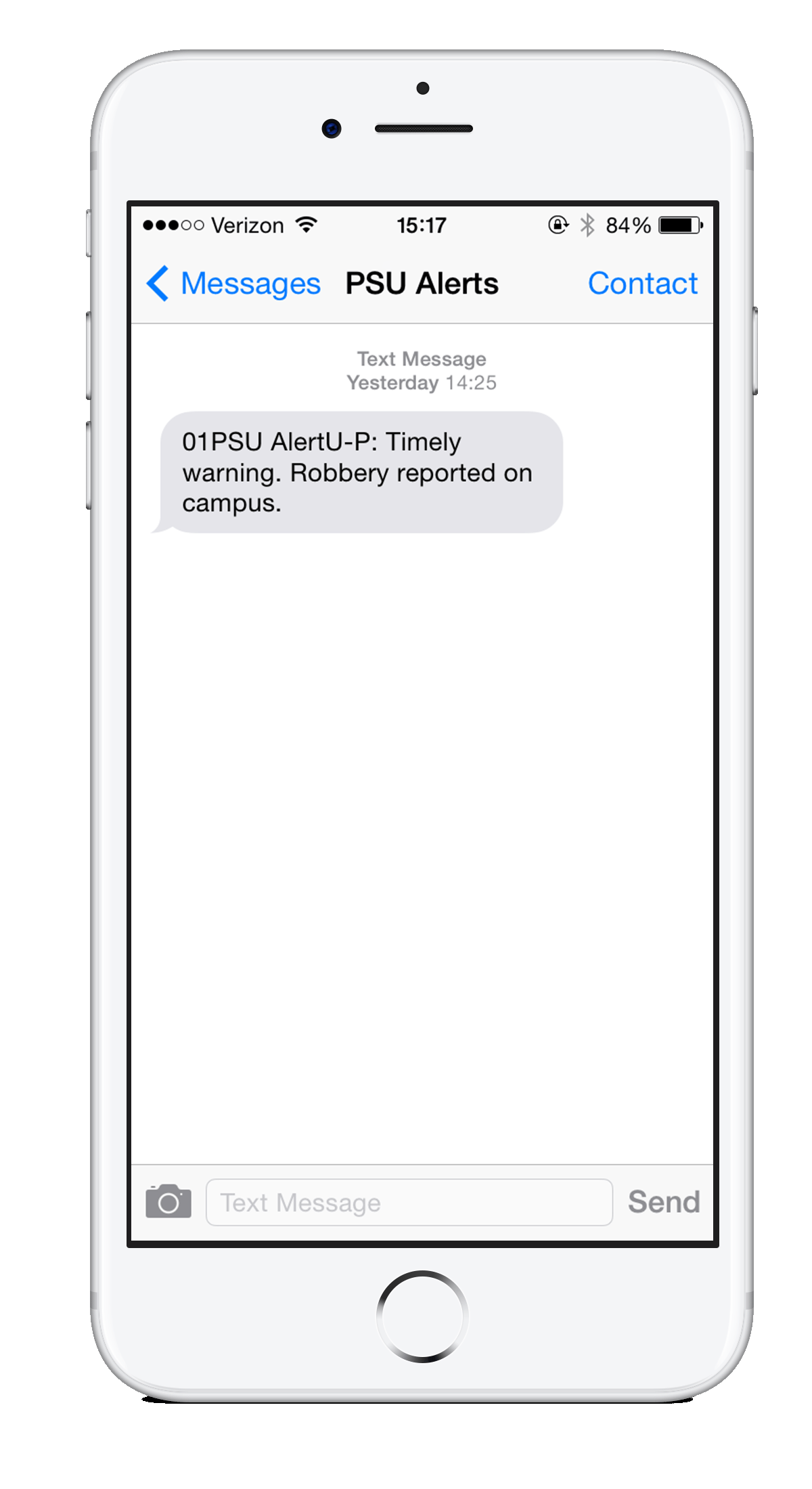
The PSUAlert system as it is used currently with just text information
Persona
The personas for the app were created keeping in mind the population that comprised Penn State Campus, namely: Undergraduate student, Graduate student, Faulty and Staff. I brainstormed with my team-mates to give life to the personas and their needs that our app would potentially satisfy.
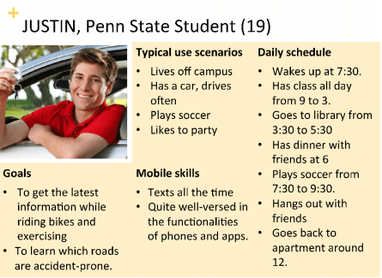
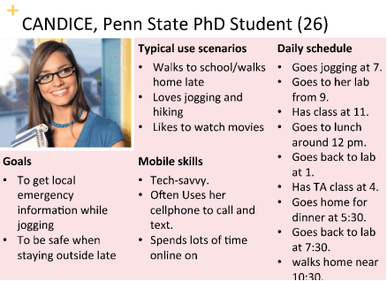
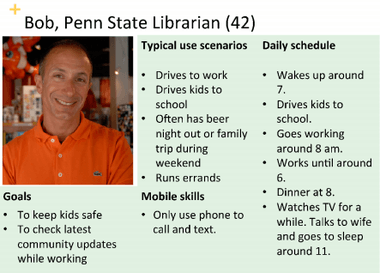
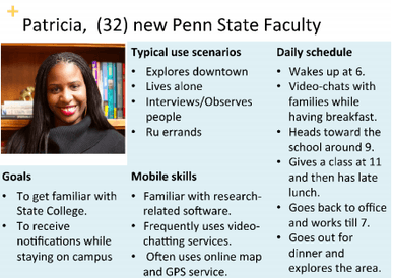 The personas of the different user groups who will be using this app
The personas of the different user groups who will be using this app
Storyboard
To illustrate how the app can satisfy the needs and help solve a problem for each persona, a scenario was created for each. I created the scenario for Candice and helped storyboard scenarios for the other 3 personas. I used StoryBoard That and BitStrip for creating the scenarios.
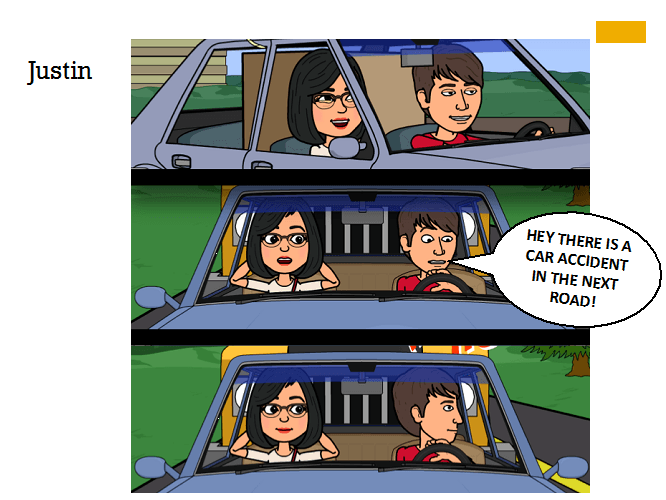
Storyboard and use case scenario for Justin
Wireframing
The wireframes below depict how the user can access various functions and use them. The app gives the user the flexibility to just send text to report the crime and/or to attach images from either the previously taken snapshots or new snapshots. It also portrays how Pebble will display the same information. Efficiency on the small screen was of utmost importance and special care was taken that the user can easily read and reach the information required within few button pushes (ideally on one screen only). Balsamiq was used to create wireframes and mockups.
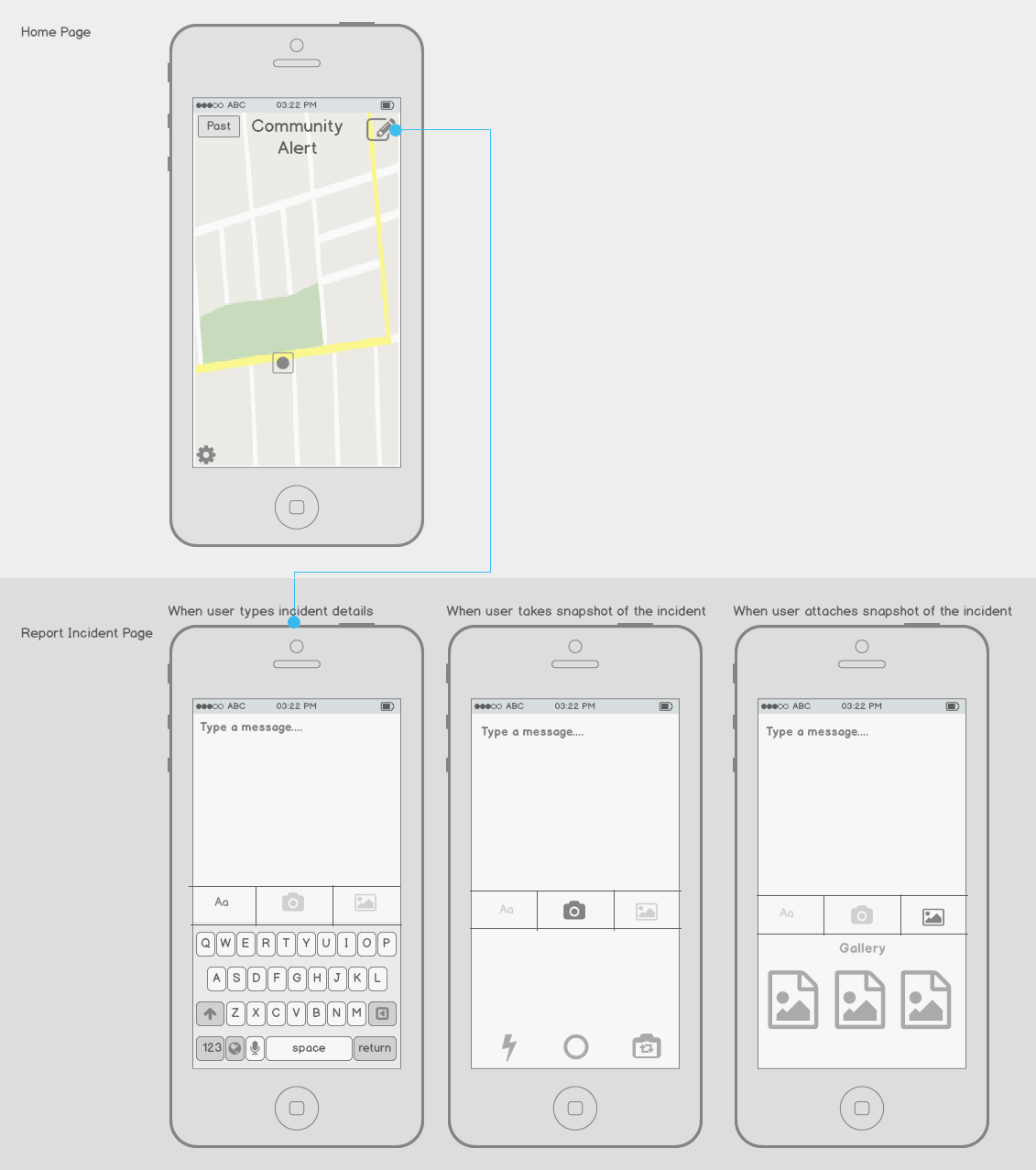
Screen layout when the user wants to report incident by text only, or attached image by taking a new snapshot or attaching from the previously taken snapshots
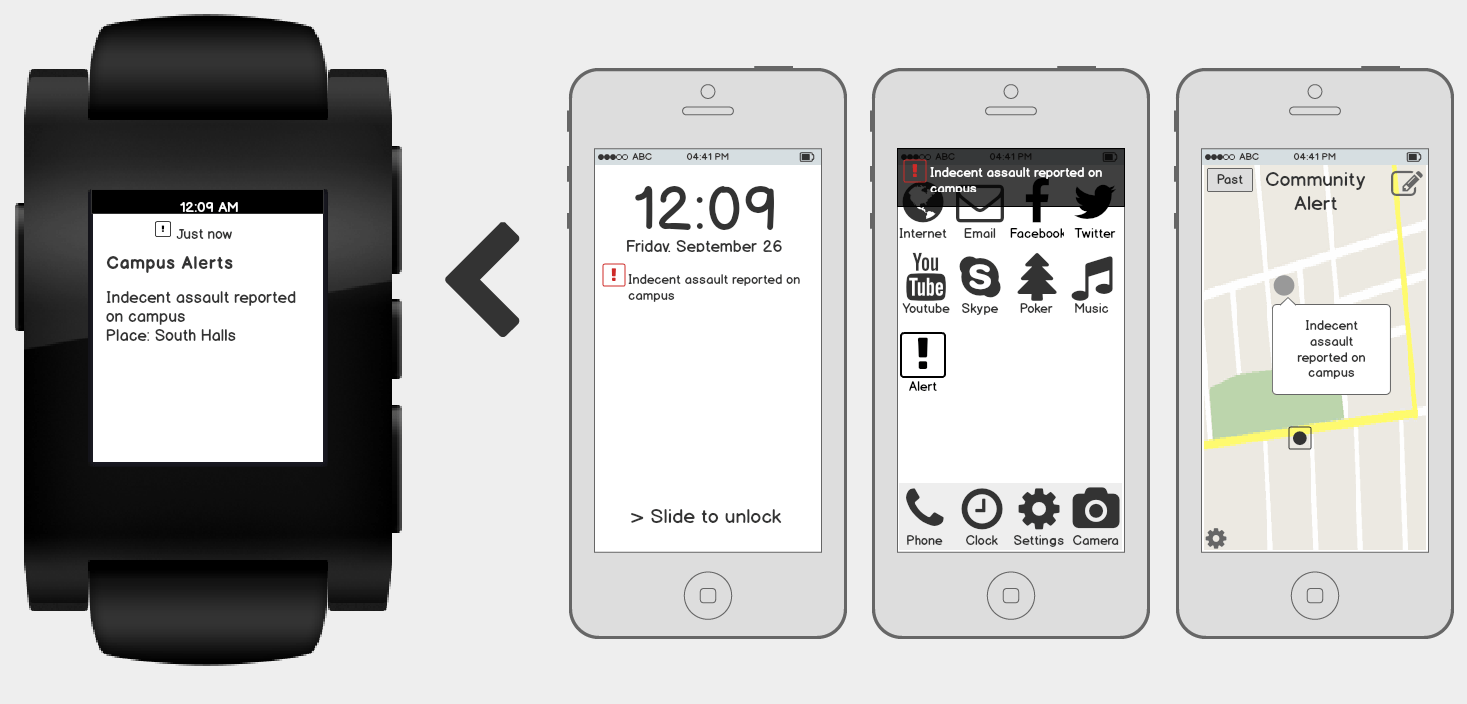
Pebble screen when the user receives an alert regarding any incident nearby
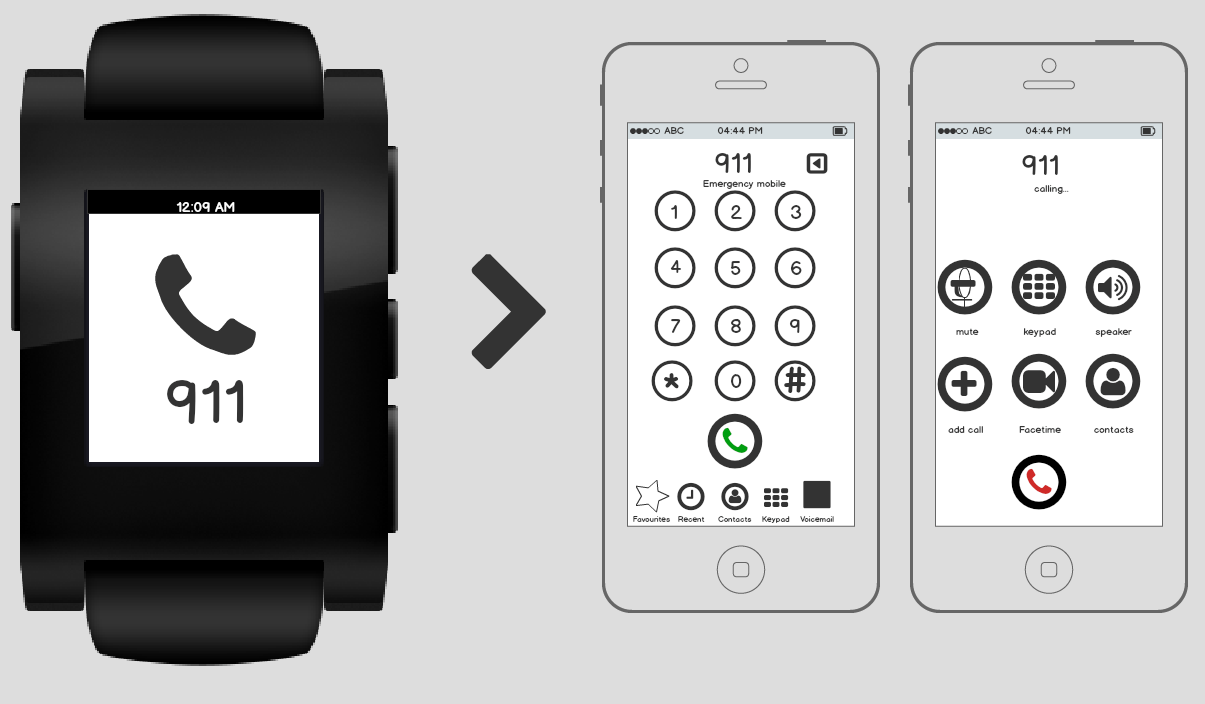
Pebble screen when user calls 911 to report any incident
High Fidelity Prototype/Working Prototype
The high fidelity prototype of the app was the actual working prototype that was used for the usability testing.
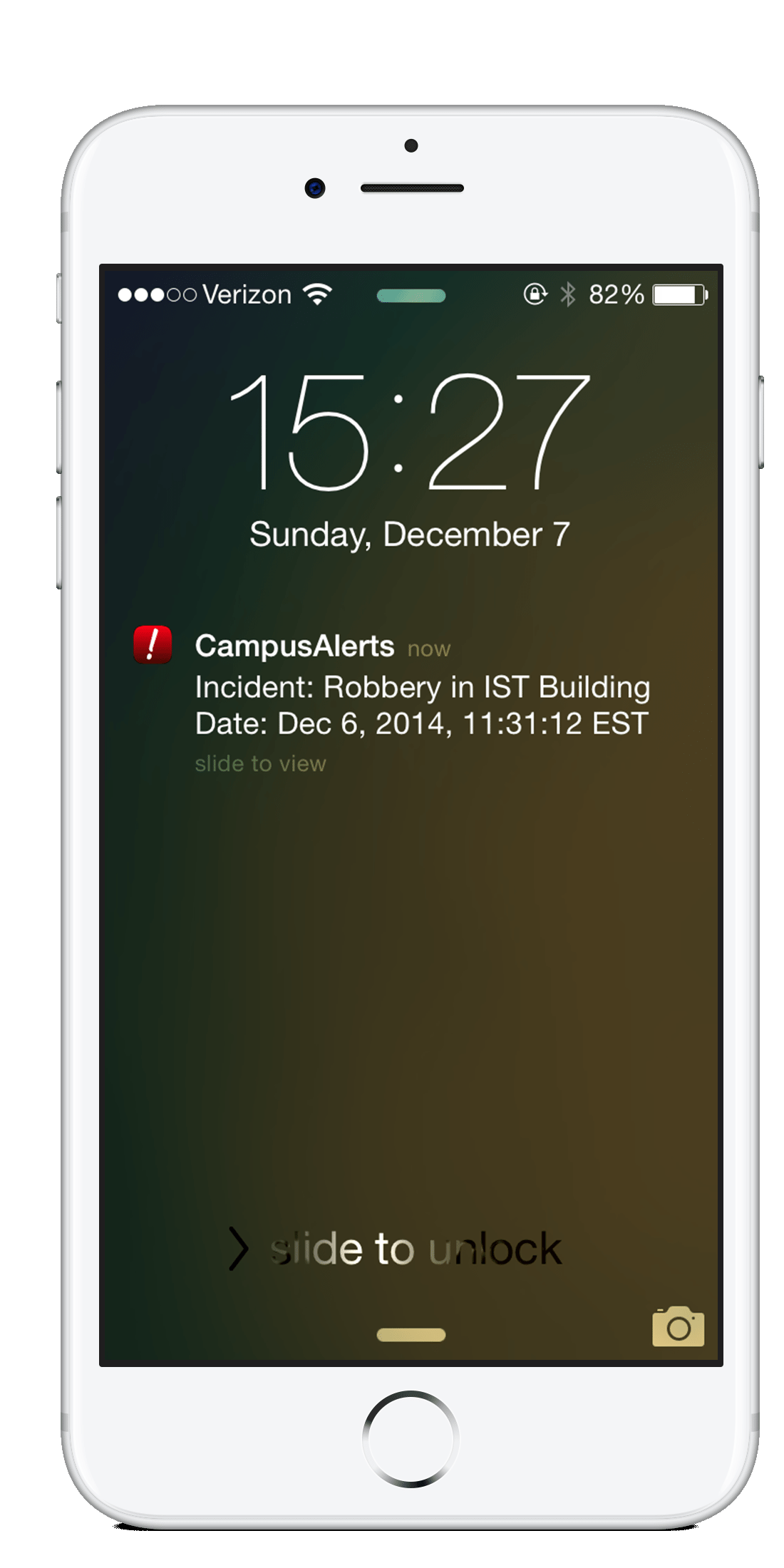
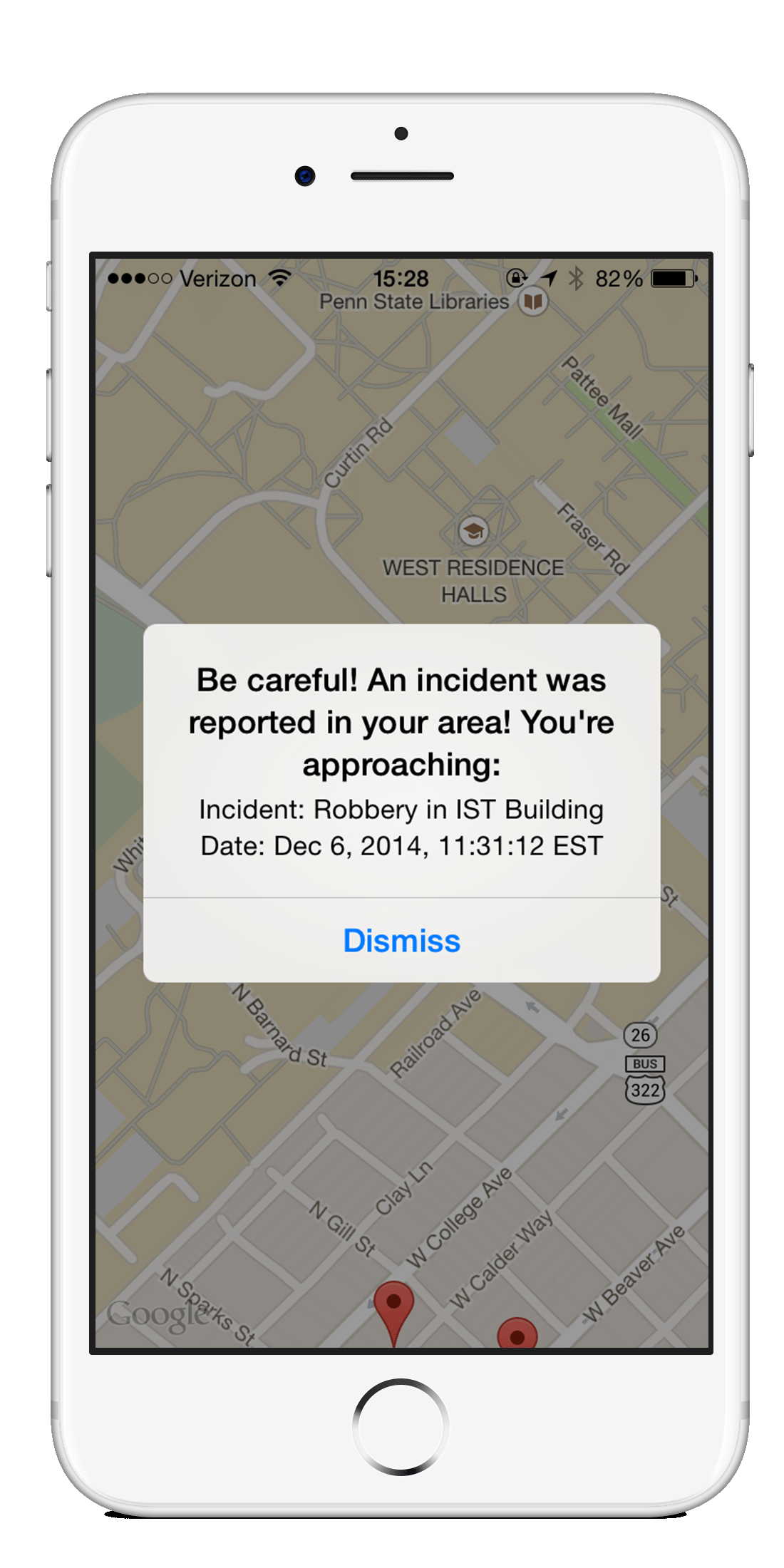
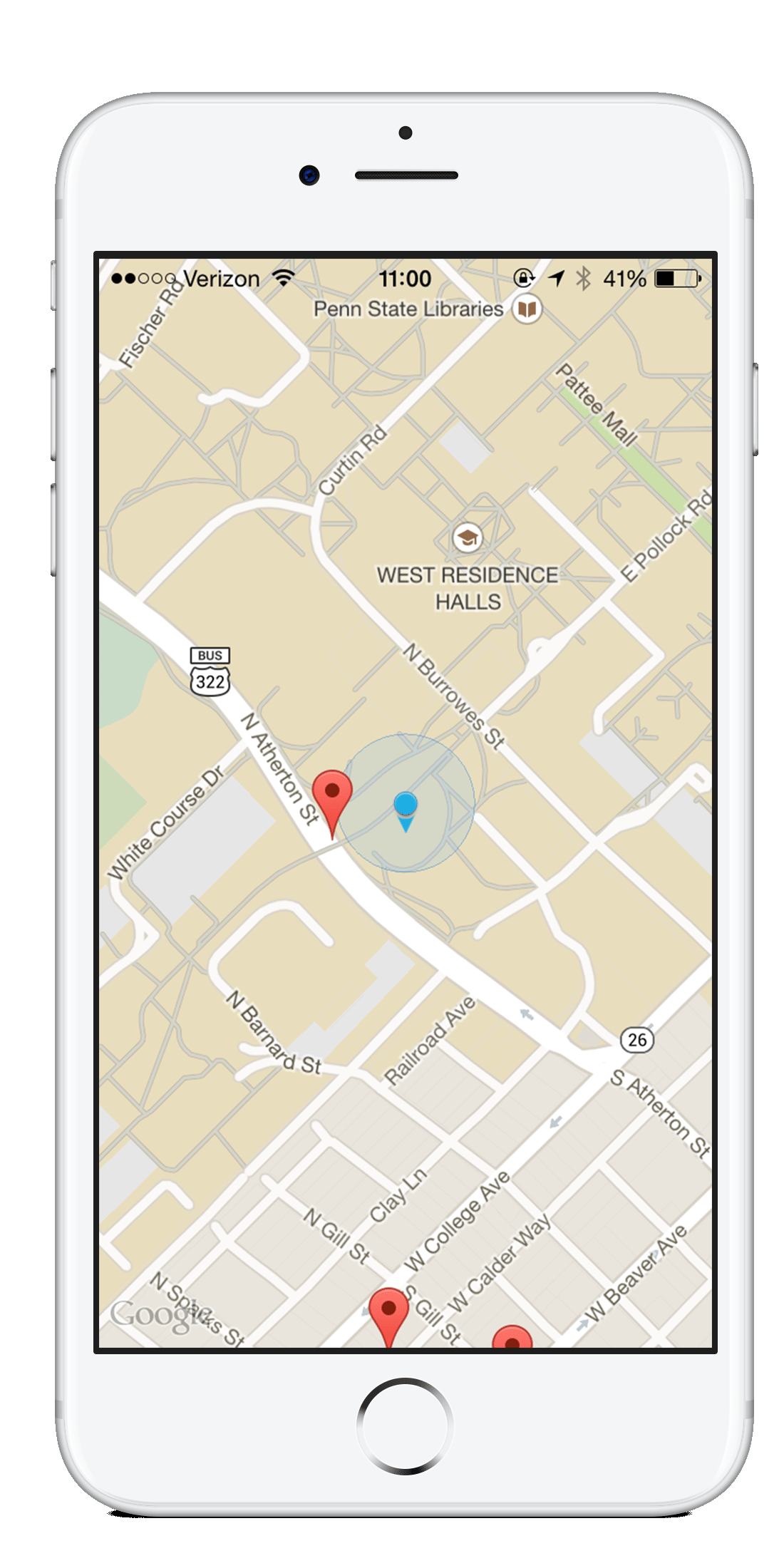
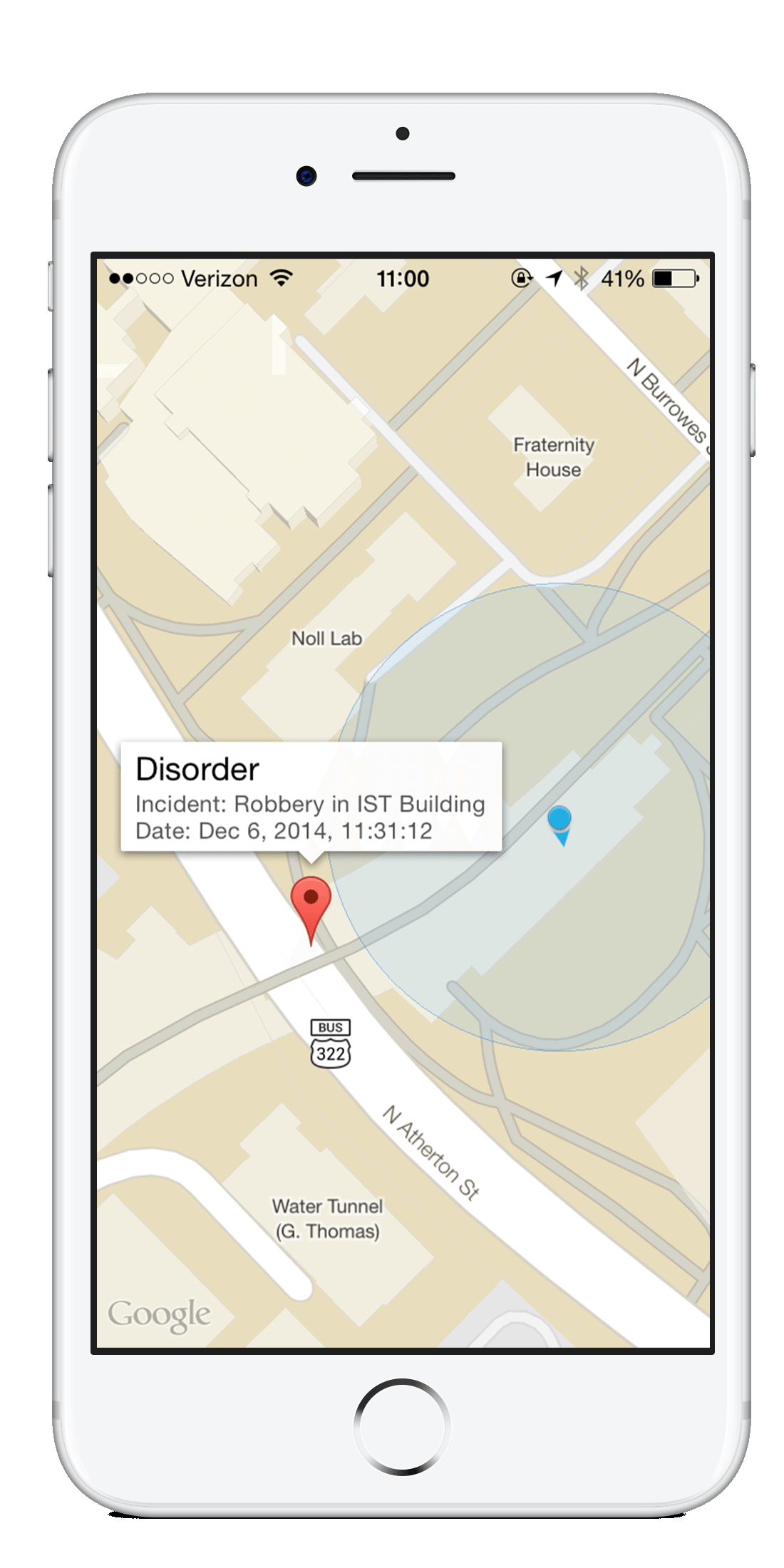
The different screenshots of various screens of the working app that was developed for user testing
Usability Testing
The usability testing was divided into 3 parts: Surveys, Controlled Experiment (A/B Testing) and Follow-up Interviews . 10 participants were recruited for testing representing each persona we had created. My work in the testing was to come up with pre-survey & post-survey and interview questions along with helping to recruit participants for the testing.
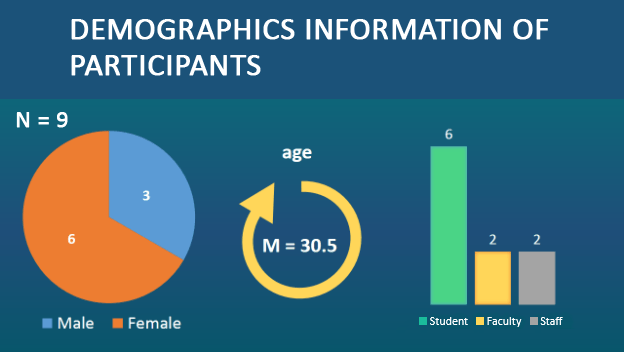
Participant demographics
Statistical Analysis
I performed paired sample t-tests using SPSS to analyze the data obtained from the testing. The questions asked in pre and post surveys and interviews were classified into 4 categories: higher level of perceived sense of security, a higher level of perceived convenience, a higher level of willingness to use our app and a higher level of willingness to share our app. The results obtained along with their significance is given below:
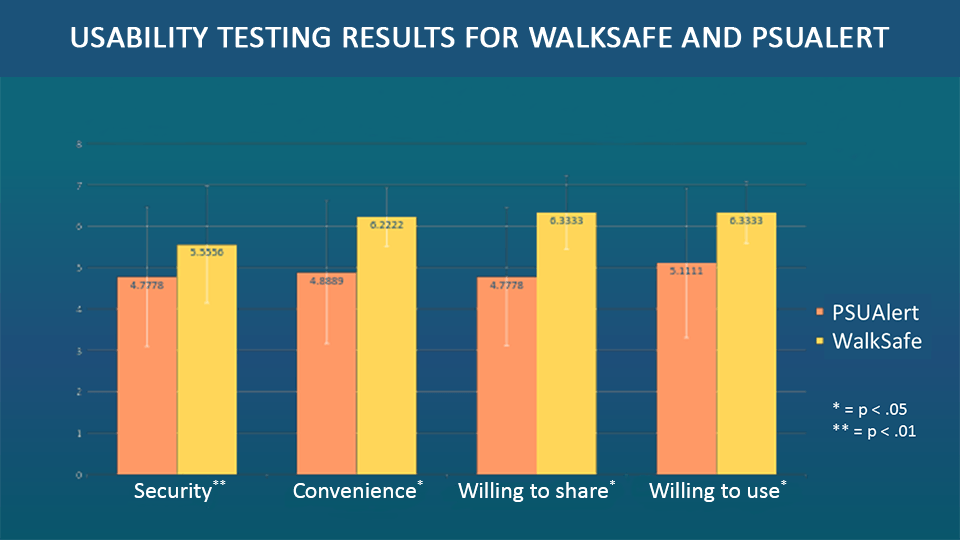
Analysis of the user testing data for WalkSafe vs PSUAlert
Our app focused on providing users higher sense of security and convenience as compared to PSUAlert. The app is connected to pebble watch which helps notify user of the incident if he/she does not have phone on hand.
- Location Based Interface : Gives location of the current incident/s.
- Proximity of Location : Shows the incident location w.r.t. user location.
- Previous Incident Details : Gives a list of the incidents that occurred in the area in a given time range.
- Instantaneous Notification : Instantly notify user of the incident happening in the vicinity.
Ideate
The idea for the app was drawn from PSUAlert, a text/call/email time-based notification system for incidents reported on Penn State Campus. The following are PSUAlert features and the design problems that the app aimed to improve:
- Time-Based Interface : Does not include location and time in the incident notification. Needed to know how far and when the incident happened.
- Previous Incident Details : Does not provide a comprehensive list of all the incidents that have happened before. Needed for people new to area to ensure their safety and security.
- Instantaneous Notification : Feature not provided. Notification sent when the incident is of no danger anymore. Needed to know if the incident is in the vicinity and what steps should user take in order to ensure their safety.

The PSUAlert system as it is used currently with just text information
Persona
The personas for the app were created keeping in mind the population that comprised Penn State Campus, namely: Undergraduate student, Graduate student, Faulty and Staff. I brainstormed with my team-mates to give life to the personas and their needs that our app would potentially satisfy.




Storyboard
To illustrate how the app can satisfy the needs and help solve a problem for each persona, a scenario was created for each. I created the scenario for Candice and helped storyboard scenarios for the other 3 personas. I used StoryBoard That and BitStrip for creating the scenarios.

Storyboard and use case scenario for Justin
Wireframing
The wireframes below depict how the user can access various functions and use them. The app gives the user the flexibility to just send text to report the crime and/or to attach images from either the previously taken snapshots or new snapshots. It also portrays how Pebble will display the same information. Efficiency on the small screen was of utmost importance and special care was taken that the user can easily read and reach the information required within few button pushes (ideally on one screen only). Balsamiq was used to create wireframes and mockups.

Screen layout when the user wants to report incident by text only, or attached image by taking a new snapshot or attaching from the previously taken snapshots

Pebble screen when the user receives an alert regarding any incident nearby

Pebble screen when user calls 911 to report any incident
High Fidelity Prototype/Working Prototype
The high fidelity prototype of the app was the actual working prototype that was used for the usability testing.




Usability Testing
The usability testing was divided into 3 parts: Surveys, Controlled Experiment (A/B Testing) and Follow-up Interviews . 10 participants were recruited for testing representing each persona we had created. My work in the testing was to come up with pre-survey & post-survey and interview questions along with helping to recruit participants for the testing.

Participant demographics
Statistical Analysis
I performed paired sample t-tests using SPSS to analyze the data obtained from the testing. The questions asked in pre and post surveys and interviews were classified into 4 categories: higher level of perceived sense of security, a higher level of perceived convenience, a higher level of willingness to use our app and a higher level of willingness to share our app. The results obtained along with their significance is given below:

Analysis of the user testing data for WalkSafe vs PSUAlert
